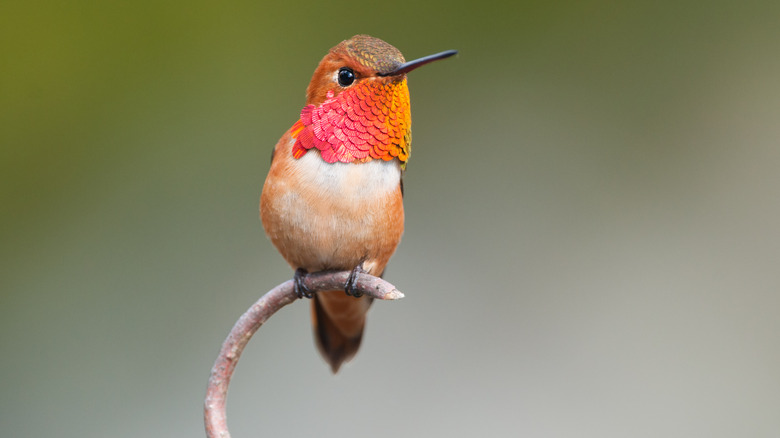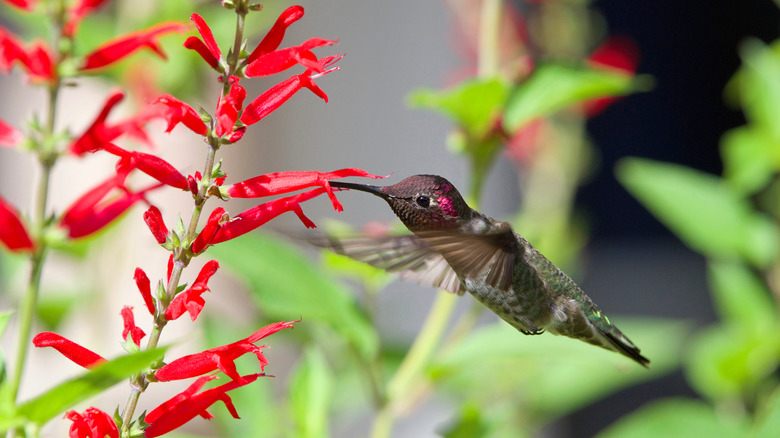Easily Attract Hummingbirds To A Garden With An Herb That Smells As Sweet As It Sounds
Gardeners love growing multi-purpose plants, and it's not every day you find tropical fragrance, blooms that charm wildlife, and edible features wrapped up in one package. That's why pineapple sage (Salvia elegans) is one of the herbs you should grow to attract more hummingbirds to your garden. Hummingbirds love both tubular and red flowers — so pineapple sage provides a winning combination as far as these feisty birds are concerned. And as summer and fall bloomers, pineapple sage provides hummingbirds with a valuable food source when few others are available.
Gardeners might love pineapple sage as much as hummingbirds do. In addition to attracting hummingbirds, pineapple sage is edible and highly fragrant, with its leaves producing a fruity aroma when rubbed. These plants are shrub-like, growing up to 5 feet tall and 4 feet wide, and produce spikes of tubular red flowers in late summer and fall. In locations with short summers, they can be grown as an annual, while gardeners in USDA Hardiness Zones 8 to 10 can cultivate pineapple sage as a perennial with the right growing conditions.
How to grow pineapple sage to attract hummingbirds
Good drainage and moderate soil moisture are all this herb needs, in addition to full sun. However, gardeners in hot locations find that pineapple sage does better with afternoon shade. Since this low-maintenance plant doesn't start to bloom until midsummer has passed and days begin to shorten, gardeners with shorter growing seasons may want to try an earlier-blooming cultivar of pineapple sage like 'Honey Melon' to ensure that plants flower before hummingbirds fly south for the winter.
Pineapple sage is as gorgeous in cottage gardens as it is in pollinator or butterfly gardens, and this herb will shine in many different spots in the yard. Since it is edible, its leaves and flowers can be used to make teas or garnish salads, but watch out for look-alike scarlet sage (Salvia coccinea). You can tell the difference by examining these plants' leaf margins — the edges of scarlet sage's leaves are scalloped, and the edges of pineapple sage's leaves are serrated. While scarlet sage will also entice hummingbirds to your garden, it's not edible like pineapple sage. Whether you're growing pineapple sage for its edible properties or just for its wildlife-attracting value, keep in mind that pineapple sage attracts even more pollinators when paired with garden favorites like bee balm and coneflower.

